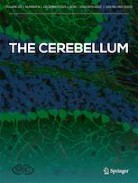Novelties in Autoimmune and Paraneoplastic Cerebellar...
Cerebellar ataxias often represent a diagnostic challenge due to their wide differential diagnosis, which includes both genetic (sometimes inherited) and acquired disorders. Among the latter, autoimmune cerebellar ataxias are of major relevance since they are treatable conditions that may potentially recover with immunotherapy. Despite being a relatively uncommon cause of cerebellar ataxia the recognition and therefore frequency of autoimmune cerebellar ataxias have notably increased in recent years, principally thanks to the identification of antibodies against neural antigens serving as reliable biomarkers. Nevertheless, a substantial subset of suspected autoimmune cerebellar ataxias have no identifiable antibodies yet, making it particularly difficult to establish a firm diagnosis in such cases. Herein, we review the most relevant findings of the last 20 years regarding immunological, clinical, and pathogenic features of autoimmune cerebellar ataxias.




